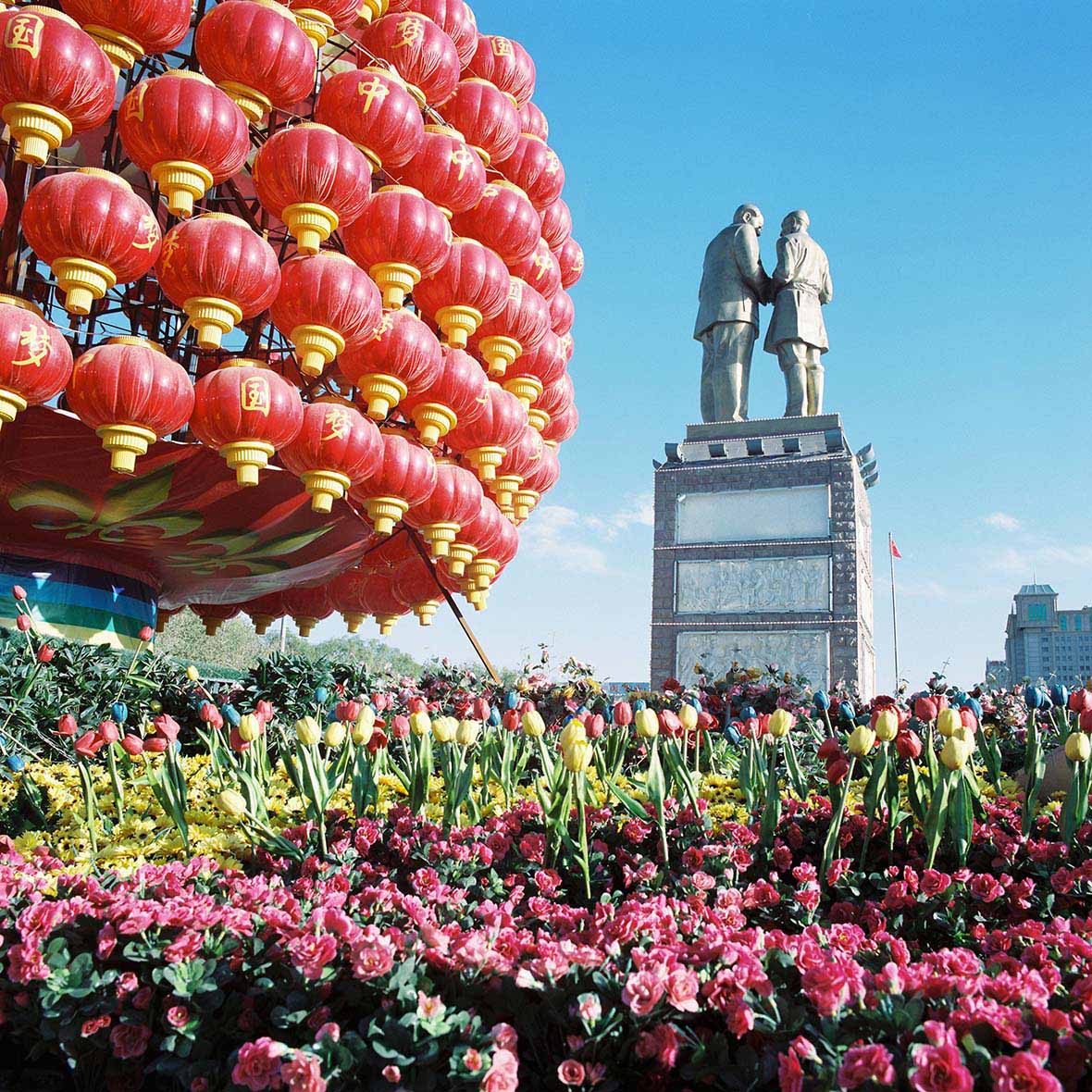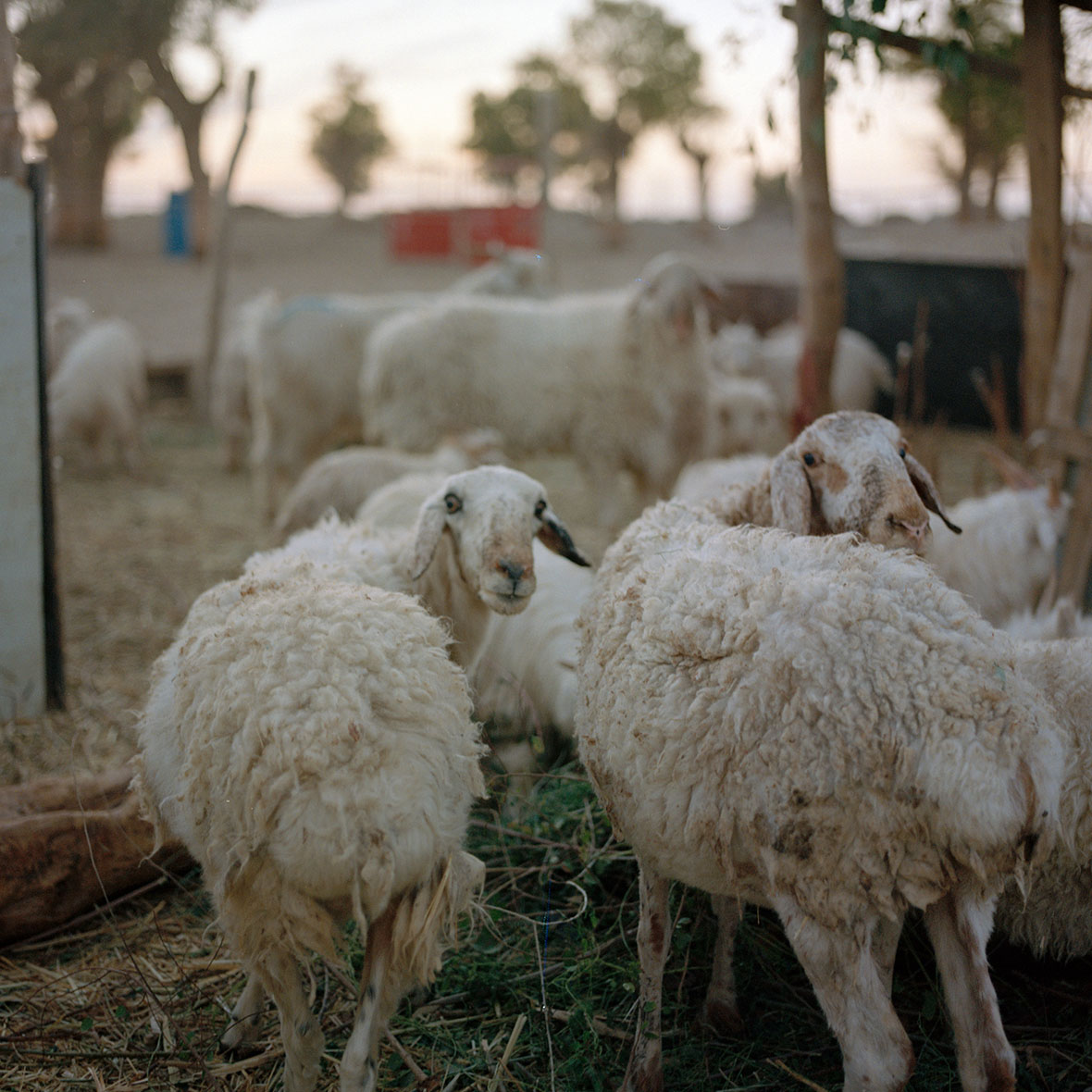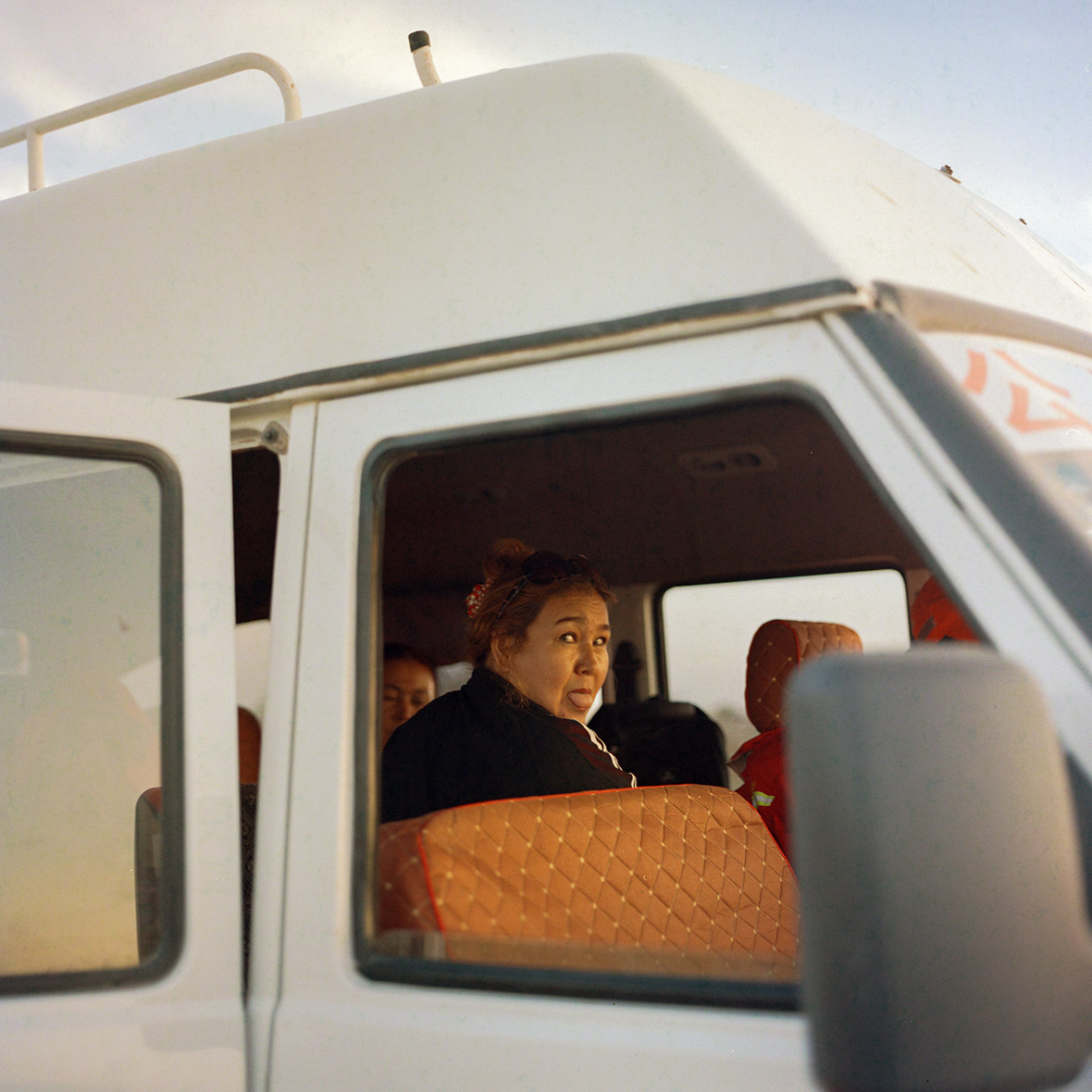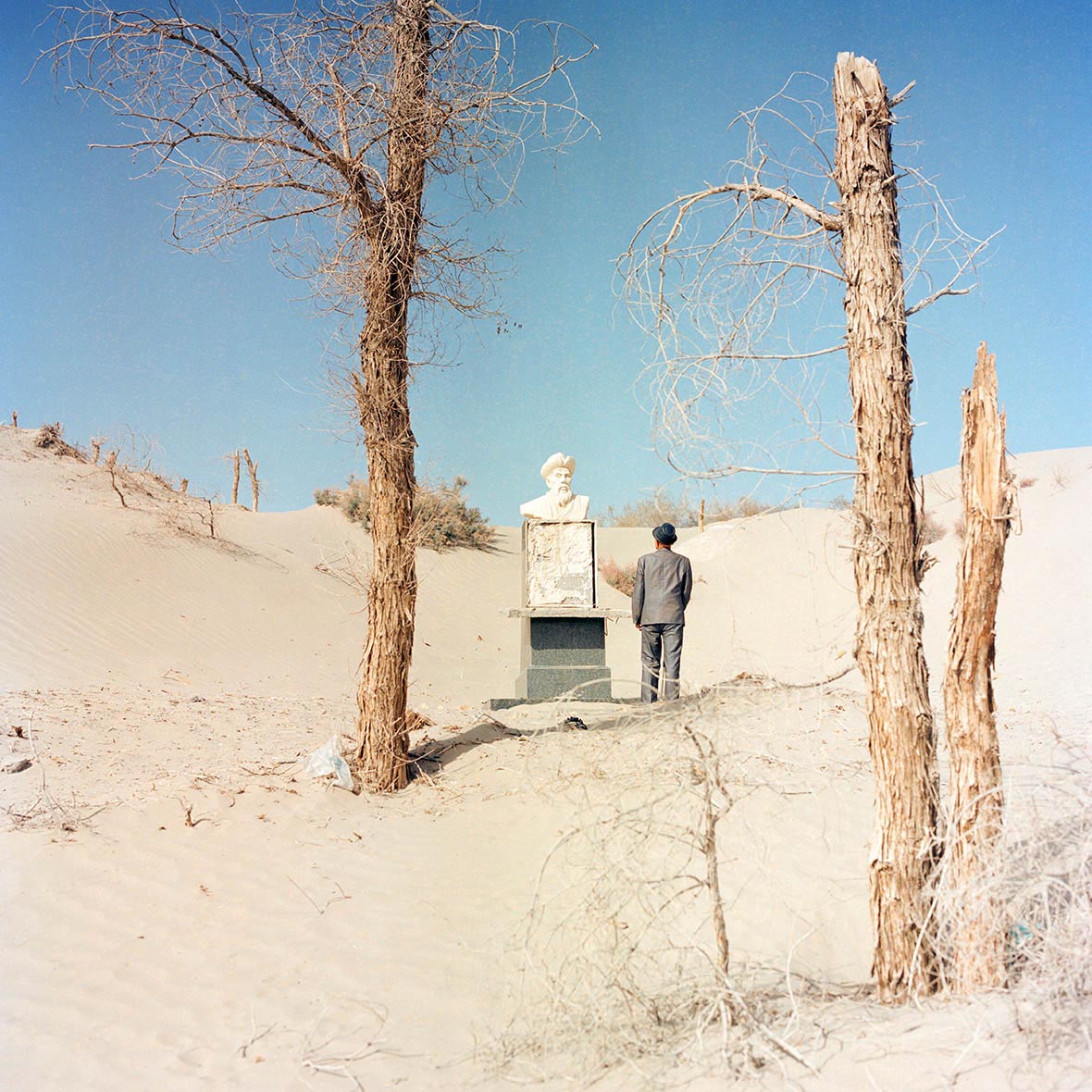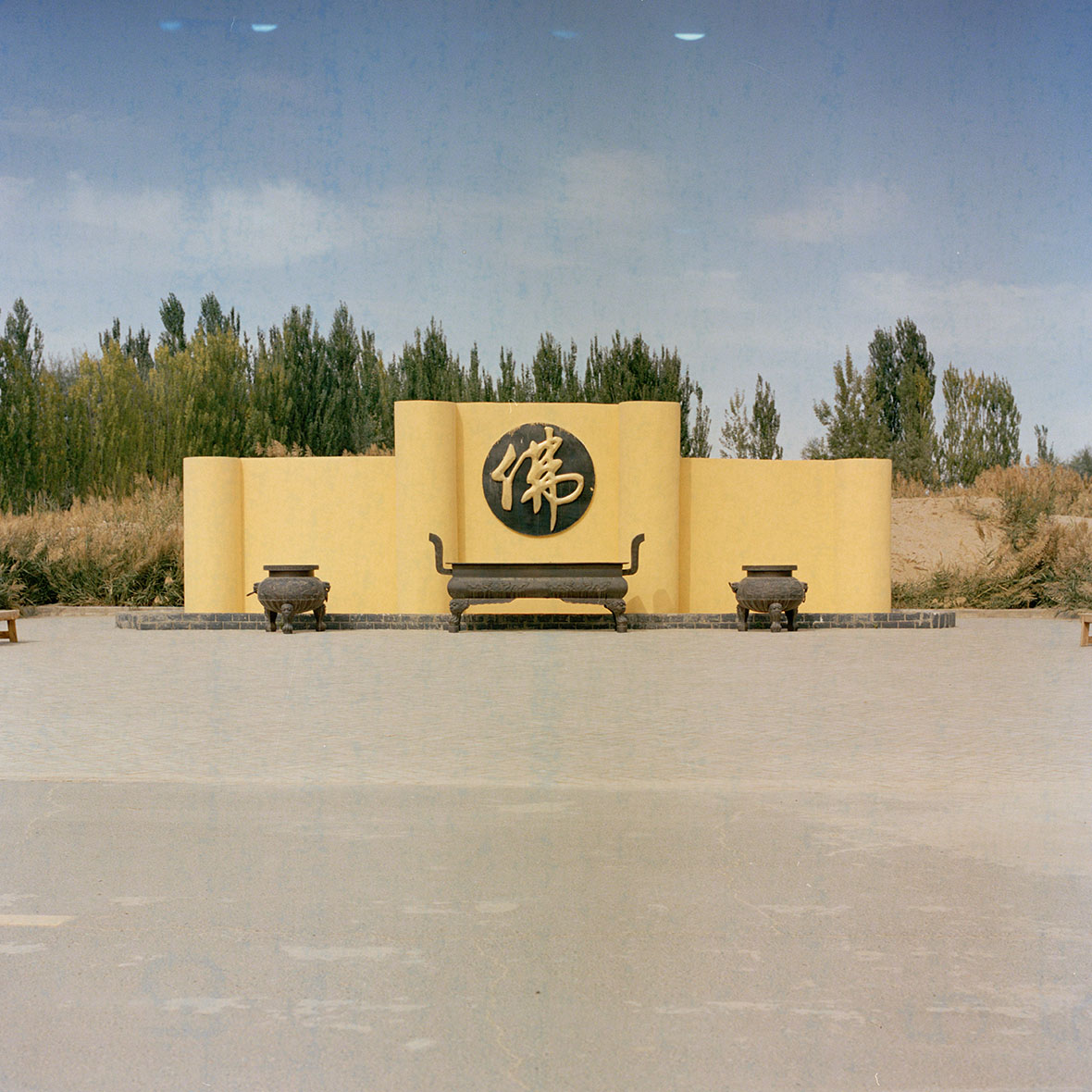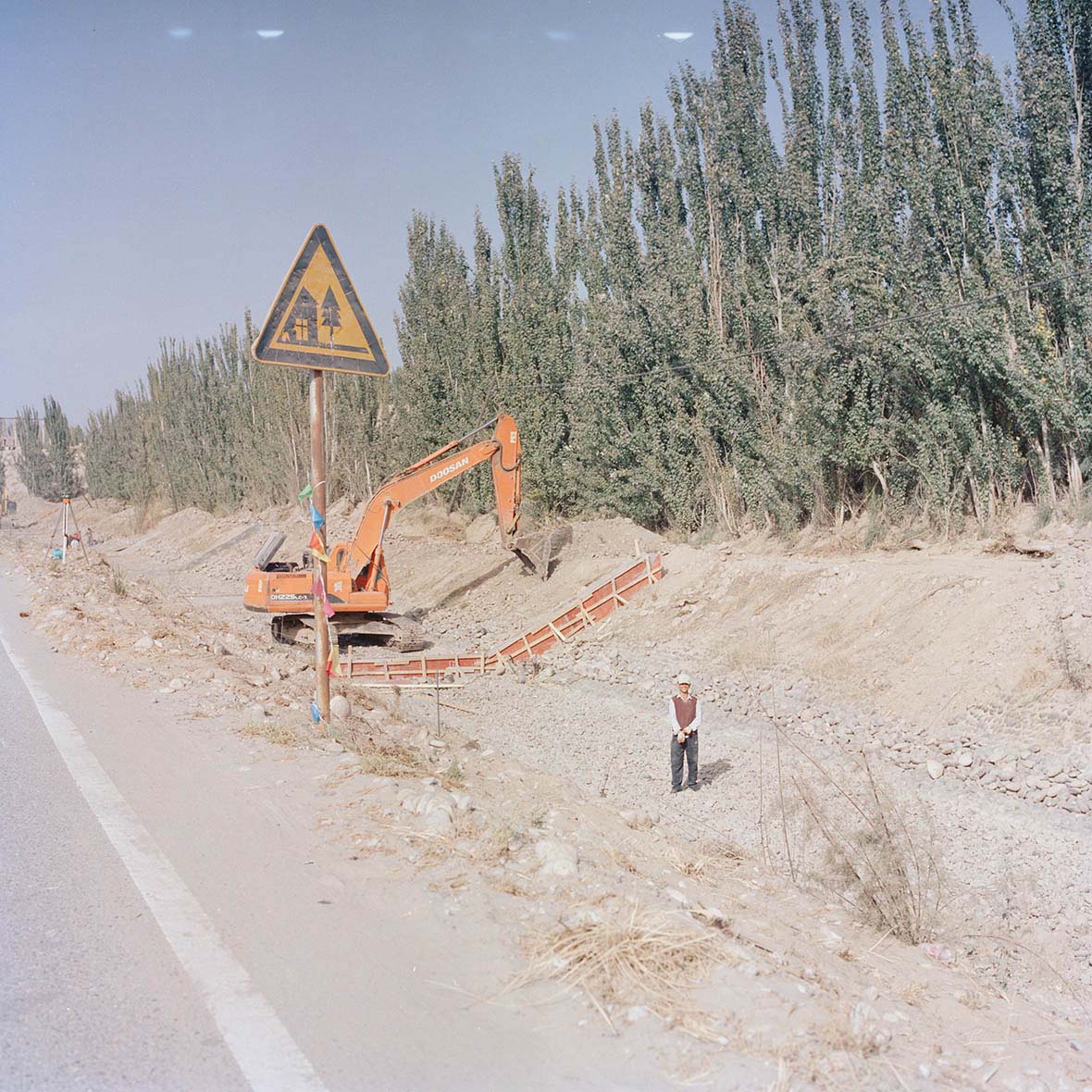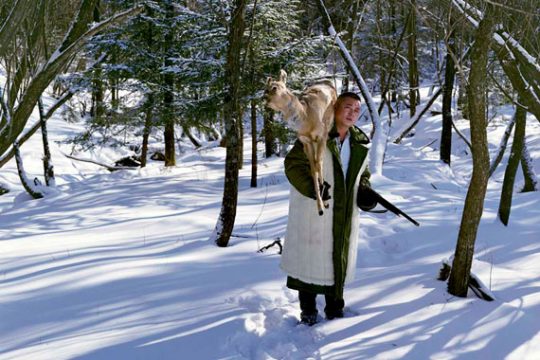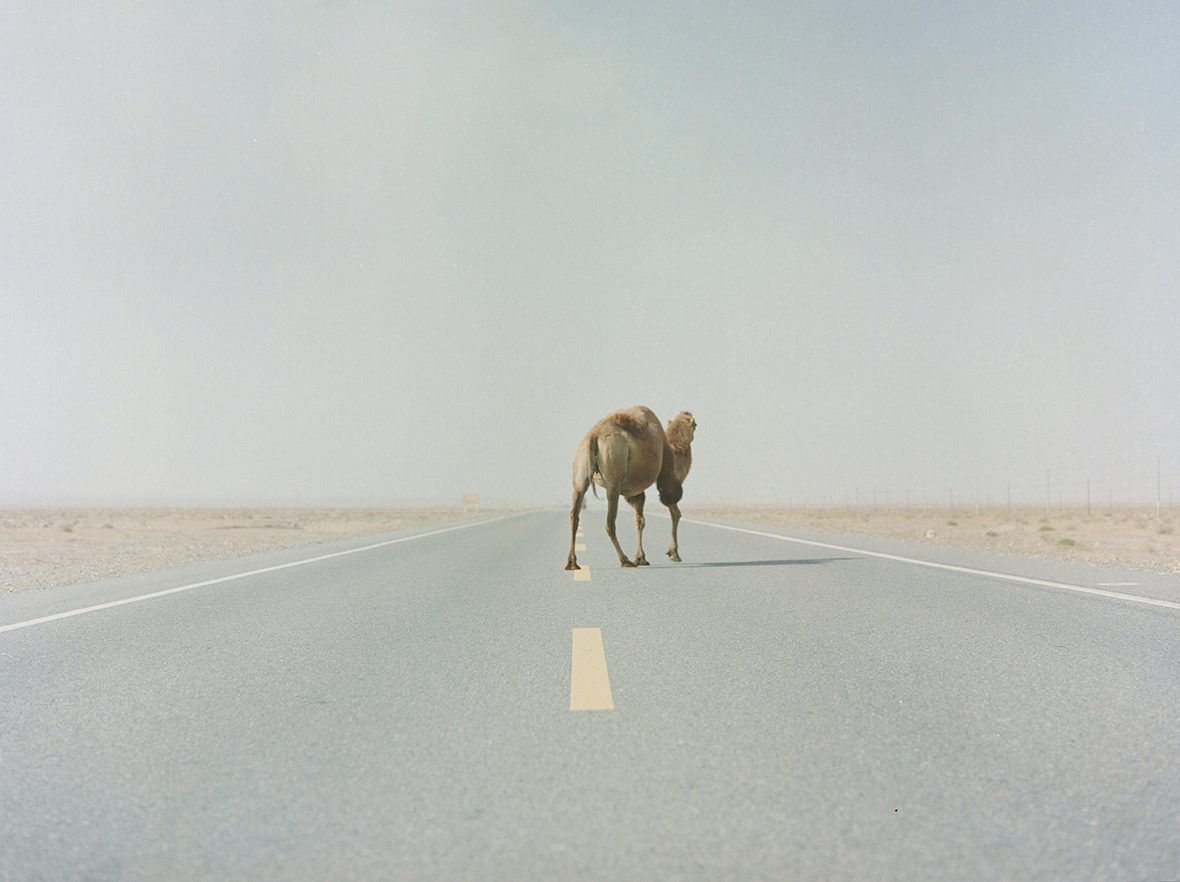
In Xinjiang, the region in Western China whose name means “new frontier,” history seems to be everywhere you look. The landscape is stark and bewitchingly beautiful. Across the southern half of the region runs the Tarim river, whose basin collects waterways of the Taklamakan desert and defines the borders of the area known as Nanjiang.
Nanjiang is the subject of a photography series by Zhang Boyuan called, somewhat confusingly, Jiangnan.
Zhang was born and raised in Xinjiang, and after college he went to study at the University of the Arts, London. And it was there—homesick and far away, having just watched the documentary Tarim River—that he first got the idea to shoot a series in Nanjiang.
新疆,这个坐落在中国西北部边疆的地区,旧称西域,仿佛从古老历史中缓步而来,兼具神秘的美感、荒芜的野性;塔里木河,这条绵延两千公里,贯穿塔克拉马干沙漠的河流,则画出了“疆南”地理上的起止。
张博原的镜头,正是对准了这个“疆南”——生于新疆的他,本科毕业后去伦敦艺术大学读研,去拍南疆的这个决定,则是在他身处异国怀念家乡时,偶然看了《塔里木河》这部纪录片后所做的。
When Zhang first shot the series, one picture in particular stood out to him: an Uyghur child crouching in Unity Square, in the city of Hotan, in front of an enormous statue of Mao Zedong shaking hands with Kurban Tulum. (Kurban Tulum, or “Uncle Kurban,” was an Uyghur farmer glorified by the central government as a symbol of unity). It’s an image rich in detail and suggestion. Zhang has shot all of Jiangnan’s iconic settings, figures, and scenery. He uses that scenery to “construct my own impression, my own fantasy of the land.” It’s an expression of his love for the landscape.
这个系列进行的时候,张博原说有一张照片曾让他印象深刻:一个维吾尔族小巴郎子,蹲在和田的团结广场上,而他背后有着一座巨大的毛主席与库尔班大叔握手的雕像,那张照片拥有着丰富的细节与信息量。南疆令人为之吸引的人物、景色、氛围,张博原都拍。他说,这是在用景观“构建自己对这片土地的印象与幻想”,是“寄情于景”的表达。
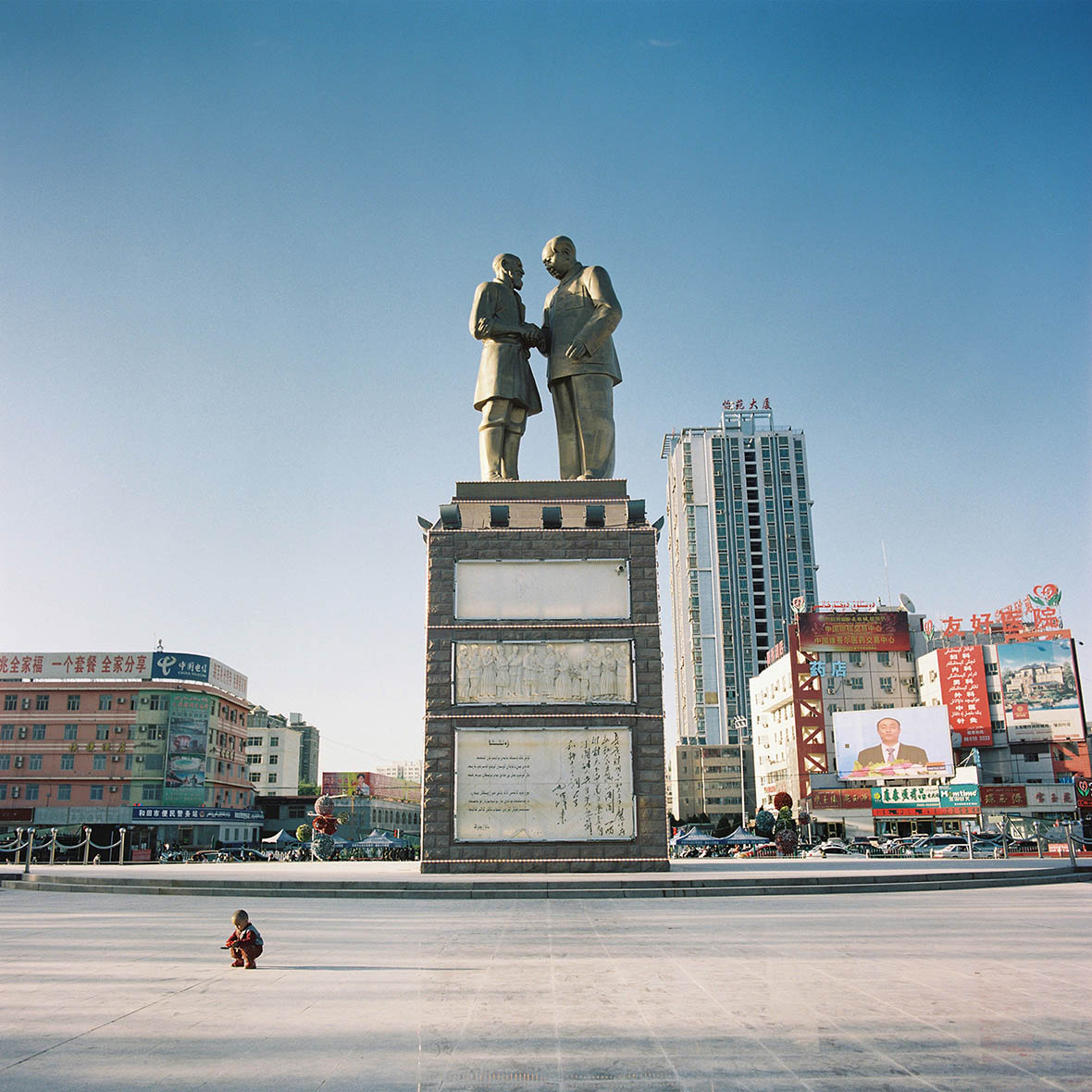
Zhang says that the scenes in his photographs are things that were already there, but are also reflections of his own moods, and bearers of stories. “Compared to emotions and connections with people, relationships with the landscape are more internal, and more difficult,” he says. “My series Jiangnan has been going on for a long time now, and it will continue into the future. What I’m trying to do is use the relationships among the landscapes, and to juxtapose them with people and create connections, to tell the stories of this land.”
张博原说,照片里呈现的景观,是这片土地已然存在的物事,其实也是自己内心情绪的映射,是故事的载体。“相比与人产生的联系和情感,与景产生的共鸣更内化,也更不容易。《疆南》系列已经是一个长期项目,会继续做下去。我希望做的,是用景观各自间的关系,以及它们和‘人’并置、产生连接,来讲述这里的故事。”
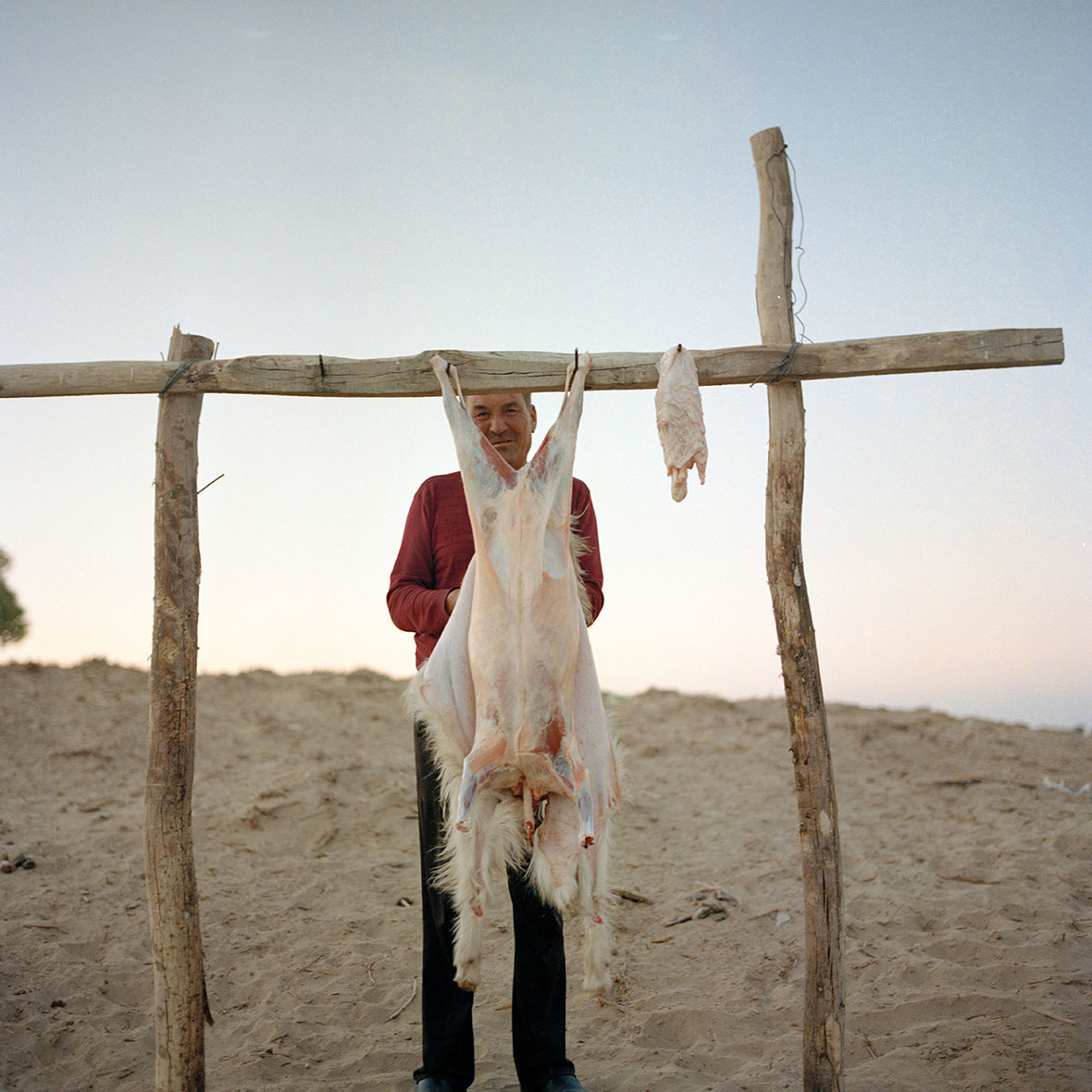
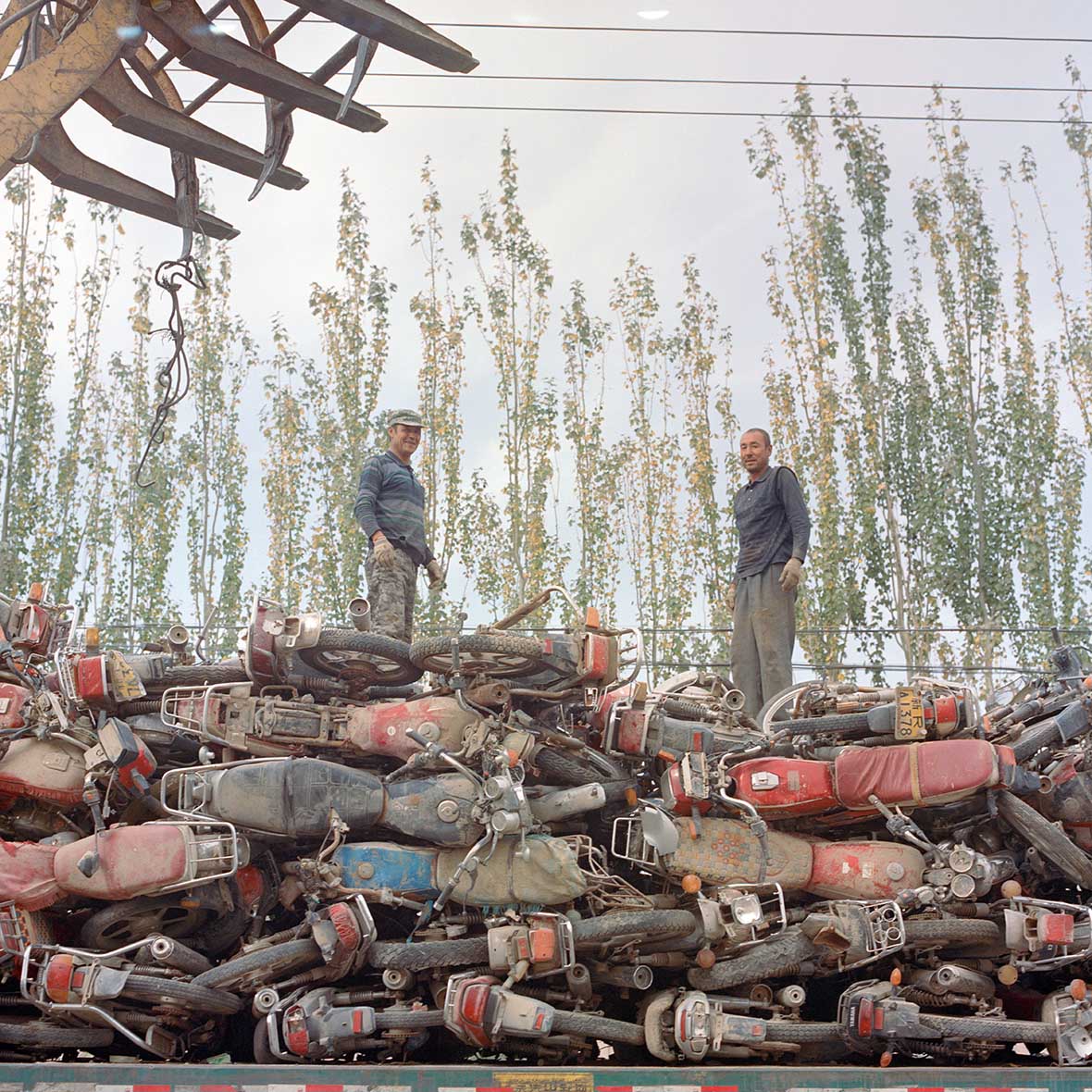
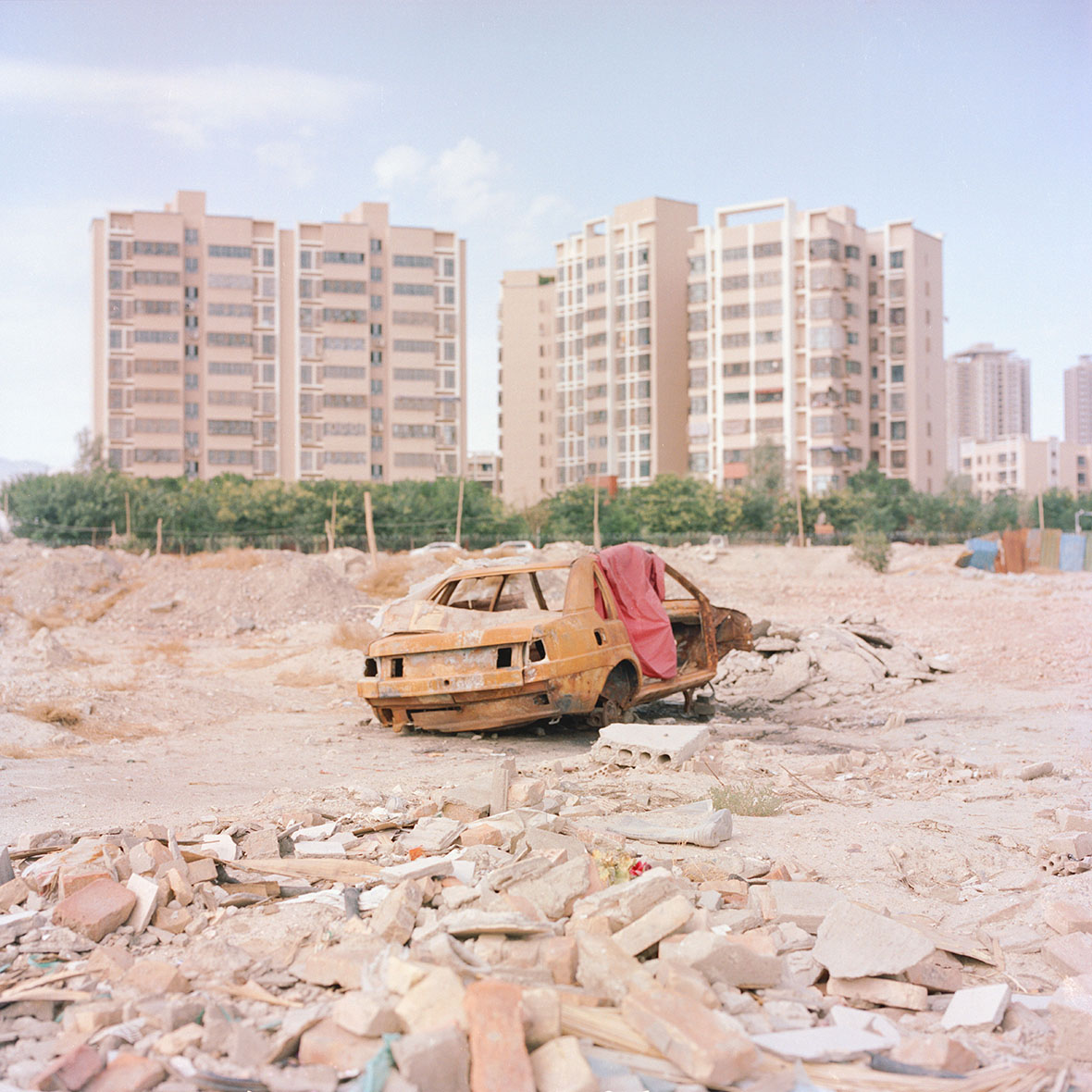
Like our stories? Follow us on Facebook and Instagram.
Website: zhangboyuan.net
Weibo: ~/张博原
Contributor: Chen Yuan

